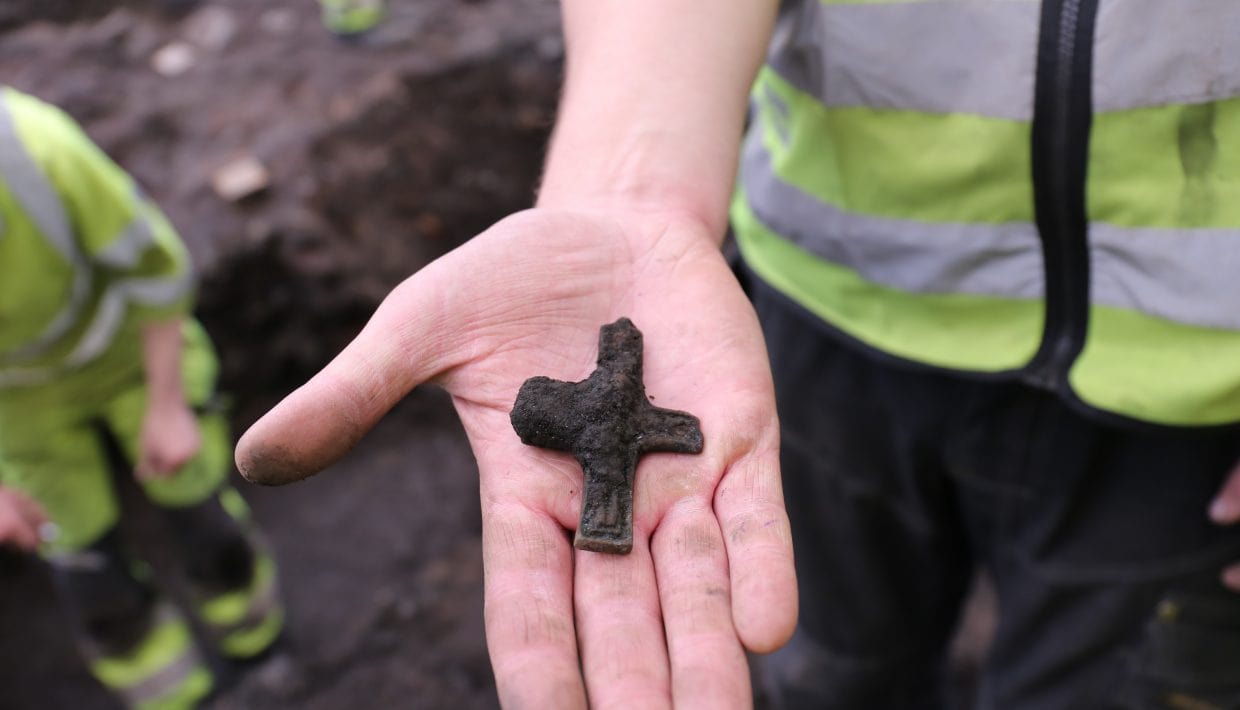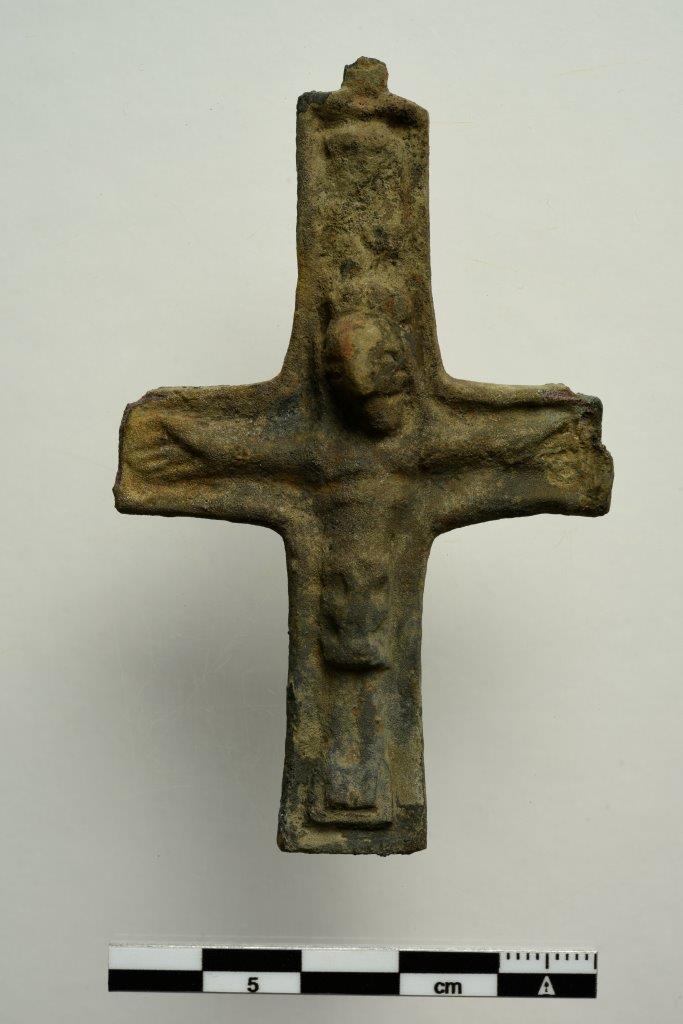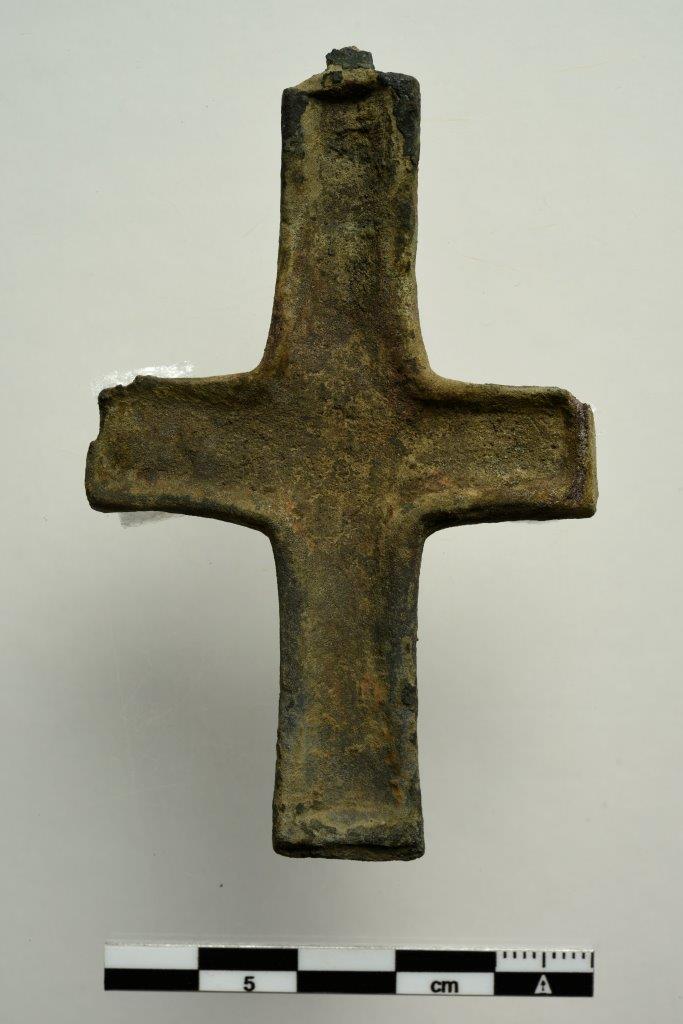
Rare archaeological find in Trondheim
Archaeologists working at the St.Clement excavation in Trondheim recently found a unique 11th century crucifix.
This article is from 2017, and there has been done further analyses of the material since then. Read the report here (in Norwegian).
In the lower cultural layers associated with our oldest church archaeologists came across an unusually nice find.
Archaeologist Reidar Øiangen was removing a charcoal-rich layer when he discovered a metal object that he immediately could see had an interesting shape.
The object turned out to be a crucifix – a cross with a figure of Christ on it – a rare find even for an experienced archaeologist!

The crucifix is made of bronze, and measures 7 cm in length and 5 cm in width on the cross-arm.
The figure of Christ has straight legs and arms, a defined chest and a short loincloth. On his head the remains of a crown is visible.
Above his head the remains of a figure is also visible, possibly a hand or a dove, but the figure is so badly preserved that it is impossible to tell the original imagery.

The straight positioning of the body combined with the crown was prevalent in the 11th century, and thus suggests a relatively early date for the item.
The crucifix found in Søndre gate is a form of pendant cross, and could possibly even be a pectoral cross of the type worn by the clergy in this period.
Very few crucifixes of this type have been found in Norway. A similar type was found out of context in Sørum, Akershus County and is kept at NTNU University museum, Trondheim.

